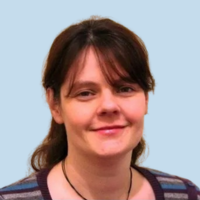Seamlessly integrated programs to bridge molecules from discovery into clinical development
There are many challenges that drug developers face when bridging from drug discovery into pre-clinical and clinical development. Traditionally, the pharmaceutical industry has been structured around different functional disciplines (“silos”), and a sponsor often has to split their drug development program across multiple service providers, including contract development and manufacturing organizations (CDMOs) and contract research organizations (CROs). This places the project management burden on the sponsor, creates white space in the development timeline, limits knowledge and material sharing, and is ultimately time-consuming and costly.
To address these challenges, Charles River and Quotient Sciences have formed a collaboration, which leverages the expertise of both companies to create a world-leading capability that supports customers from discovery through to clinical development.
In this article, we explore the unique features and benefits of the collaboration.
Why have Charles River and Quotient Sciences decided to collaborate?
Charles River provides medicinal chemistry, in-vitro and in-vivo biology, drug metabolism and pharmacokinetics (DMPK), early pharmaceutics, and non-clinical safety services to support customers from early discovery, through to Investigational New Drug (IND)/Clinical Trial Authorization (CTA) submission, and on to delivery of a new medicine.
Quotient Sciences provides drug substance synthesis and manufacturing, drug product design and development, clinical trial manufacturing, and clinical testing services, supporting customers from lead candidate selection all the way through to commercialization.
Through our collaboration, customers can access unique integrated programs that bridge molecules from early discovery to proof of concept (POC) and beyond. This removes obstacles from the critical path, reduces development risks, and shortens the clinical development pathway. Charles River and Quotient Sciences’ capabilities provide deep scientific expertise, flexibility for customers, dedicated project teams, and a bespoke service that is tailored to each development program.
What expertise and experience does each company bring to the collaboration?
Each company brings unique expertise and experience to the collaboration.
Charles River has worked on over 80% of the drugs that have been approved by the US Food and Drug Administration (FDA) over the last 3 years. They have discovered 92 pre-clinical candidates, and their scientists are named as co-inventors on over 420 patents.
Quotient Sciences works on over 150 new molecules each year, has published over 200 peer-reviewed papers and posters with customers, and has been conducting first-in-human (FIH) trials in the US and UK for over 30 years. When it comes to integrated program delivery, Quotient Sciences has completed 500 integrated programs using their unique, flagship platform, Translational Pharmaceutics®, saving an average of 18 months of development time for customers. Translational Pharmaceutics integrates drug substance, drug product, and clinical testing services under a single organization to accelerate development timelines and reduce costs.
Together, we have a leading market position. With over 100 years of combined company experience supporting hundreds of biotechs and all top 20 multi-national pharmaceutical companies, we have successfully worked on thousands of molecules across all stages of development.
What services and solutions are available through the collaboration?
We offer integrated programs that span our two organizations to shorten development timelines, including:
- Discovery – lead optimization and early pharmaceutics, translational biology, gap analysis
- Candidate development – selecting the right molecules to move into development
- Safety assessment – late lead optimization to IND-enabling studies and beyond
- Early development – accelerating molecules through FIH to POC
- Late development – accelerating products through to market authorization
- Project management – planning and integration of critical path activities, risk management
How does the collaboration work in practice?
Our approach to integrated program delivery is designed to remove the white space in drug development. Scientific solutions and key development goals are at the heart of every program, and our agile and adaptive approach ensures that we meet project needs. Each integrated program has a dedicated project governance team that spans the entirety of the project to ensure on-time delivery. Our customers benefit from a culture of quality science, technical excellence, and direct peer-to-peer communication with subject matter experts to drive strong collaboration.
What are the benefits of the collaboration for customers?
Our customers benefit from holistic scientific advice and recommendations. We work in multi-disciplinary project teams, offering unique discovery, CMC (chemistry, manufacturing, and controls), clinical, and biopharmaceutics know-how all within one team. Projects are data-driven and led by the science.
Through tight integration of discovery and development activities, we cut through traditional industry silos and accelerate timelines. In our highly interactive project teams, cross-functional experts work closely using cutting-edge technologies. This provides earlier and more informed decision-making, efficient technology transfer, and joint problem-solving.
The collaboration also reduces supply chain challenges and simplifies the outsourcing process. We manage the critical path and scheduling of activities for our customers. There is a seamless transition across the partnering organizations, providing a global reach and flexible capacity.
Overall, there is a seamless transition into clinical research. We provide the full set of deliverables required to be “clinic ready”, minimize risks, and improve the chances of clinical success.
Can you give an example of how the collaboration made a difference to a customer’s program?
For a US biotech client focused in the oncology space, Charles River rapidly identified an alternative candidate molecule based on efficacy data to progress into late lead optimization. Quotient Sciences provided GMP manufacturing of the drug substance and associated analytical and ICH stability studies to support the clinical studies. Early engagement with Quotient Sciences led to rapid supply of increasing quantities of drug substance with parallel safety assessment and clinical formulation design.
Key project benefits included:
- efficient technical transfer within established project teams
- minimal transition time between discovery and development
- rapid process development of the chemistry, improving the overall yield from approximately 40% to 70%
- removing chromatography steps by selecting an appropriate salt form that was advantageous.
The outcome was that over 100 g of GMP drug substance was delivered to scheduled timelines and specifications, achieving significant savings for the client.
Summary
Through this collaboration, Charles River’s customers can benefit from Quotient Sciences’ expertise in drug substance, drug product, and clinical testing, while Quotient Sciences’ customers can benefit from Charles River’s expertise in drug discovery, medicinal chemistry, biology, DMPK, early-stage pharmaceutics, and formulation and safety assessment. Other key benefits include reduced management burden and risk, integrated project management, and increased efficiencies by removing duplication between discovery and development partners. Together, we offer integration and a seamless transition through the discovery-to-development process.
Check out this video, to learn more.


